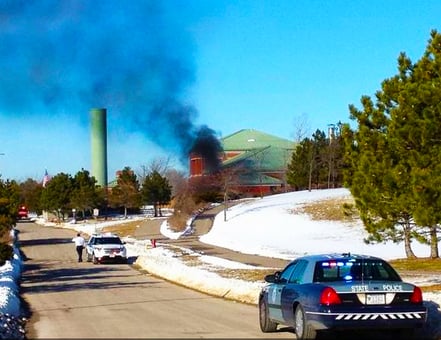After a major industrial fire there is almost always an investigation to determine what led to the fire. Knowing what the ignition source and the fuel were for the fire can help to avoid future fires, and processes can be changed to prevent the conditions that led to the first fire. After an explosion and fire at a facility on Nut Island, found off the coast of Boston, investigators were sent in to determine what created the industrial fire.
The explosion and following fire was at a sewage screening facility on the island, and took over a day to extinguish completely. The fire spread through chambers deep underground, and moved throughout underground ductwork, making extinguishing the fire a difficult task. Firefighters had to use earth-movers and cranes to be able to get to the fire.
To add to the difficulties, firefighter crews had to drain water from the underground chamber where the fire started and make sure the air was safe for fire crews and investigators to be in. Five workers at the facility were hospitalized for smoke inhalation from the explosion and fire.
Eventually, investigators determined that the cause of the industrial fire was a faulty industrial fan, which released a cloud of sulfur dust when it failed, as well as sparks that ignited the sulfur cloud it just created.
Facilities that have risks for industrial fires or explosions take steps to avoid situations that could create an ignition source, but as this example shows, the ignition source can come from sources that seemed fine and safe, and have been operating successfully in the past. “It’s safe because it’s never had an issue before” is not an acceptable safety plan.
Concerned that your factory might have hidden sources of combustible dust?
Contact a Hughes Environmental representative to learn how we can safely remove the hazard of a combustible dust explosion. Our technicians are OSHA trained and use explosion proof vacuum cleaners when handling combustible dusts.
888-845-3952 or Contact Us
Employees worried about their safety or who notice possible violations being committed are able to anonymously contact OSHA to file a complaint or request an inspection by calling 800-321-OSHA (6742) or visiting https://www.osha.gov/as/opa/worker/complain.html


